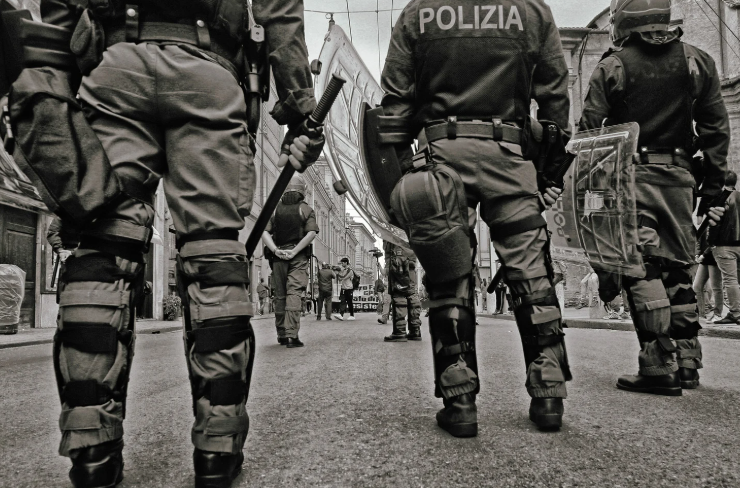The Writ of Certiorari: How the Supreme Court Decides Which Cases to Hear

The writ of certiorari is one of the most important legal tools in the American judicial system. It serves as the mechanism by which the Supreme Court exercises its discretion to review cases from lower courts. Derived from Latin, “certiorari” means “to be more fully informed.” For many petitioners, filing a writ of certiorari represents their last chance to have their case heard by the highest court in the United States.
This blog provides a detailed overview of the writ of certiorari, including its purpose, how it works, the Supreme Court’s decision-making process, and its significance in shaping American law. Understanding this legal process is essential for anyone navigating the judicial system or studying how landmark cases reach the Supreme Court.
What Is a Writ of Certiorari?
A writ of certiorari is a formal request for the Supreme Court to review a decision made by a lower court. It is most commonly used to appeal rulings from the U.S. Courts of Appeals or state supreme courts when federal issues are involved. By granting a writ of certiorari, the Supreme Court agrees to hear the case and consider its merits. Conversely, denying the writ leaves the lower court’s decision intact.
How Does the Writ of Certiorari Work?
The process begins with a party filing a petition for a writ of certiorari with the Supreme Court. This petition outlines the legal issues at stake and explains why the case warrants the Court’s attention. Here’s a step-by-step breakdown:
Filing the Petition
The petitioner, typically the party that lost in the lower court, submits a written document known as the petition for writ of certiorari. This document must:
- Summarize the case’s background.
- Identify the legal question(s) at issue.
- Explain why the case is important or how it conflicts with existing precedent.
The Supreme Court receives thousands of petitions each year but only grants certiorari in a small fraction of cases.
The Rule of Four
For the Court to grant a writ of certiorari, at least four of the nine justices must agree to hear the case. This is known as the Rule of Four, and it ensures that a minority of justices can bring a case to the Court’s docket.
Grant or Denial of Certiorari
If the writ is granted, the case proceeds to briefing, oral arguments, and ultimately a decision by the Court. If denied, the lower court’s ruling stands as the final word on the matter. A denial does not imply agreement with the lower court’s decision, but rather that the case does not meet the criteria for Supreme Court review.
Criteria for Granting Certiorari
The Supreme Court has complete discretion over which cases it hears, but certain factors make a petition more likely to succeed:
Conflicts Between Lower Courts
When different appellate courts issue conflicting rulings on the same legal question, the Supreme Court often steps in to resolve the discrepancy. This ensures uniformity in the interpretation of federal law.
National Significance
Cases that address issues of broad public importance, such as constitutional rights or landmark policy questions, are more likely to capture the Court’s attention.
Legal Precedent
The Court may grant certiorari to reconsider or clarify previous rulings, particularly if new developments or societal changes have emerged since the original decision.
Constitutional Questions
Cases involving constitutional rights, such as freedom of speech, equal protection, or due process, frequently rise to the level of Supreme Court review.
What Happens After Certiorari Is Granted?
Once the Supreme Court grants certiorari, the case enters a new phase of legal proceedings. This process includes:
Briefing
Both parties submit written briefs outlining their arguments. These documents are critical in shaping the justices’ understanding of the issues at hand.
Amicus Curiae Briefs
Interested third parties, such as advocacy groups or government agencies, may file amicus curiae (friend of the court) briefs to provide additional perspectives on the case.
Oral Arguments
The Court schedules oral arguments, during which attorneys for both sides present their cases and answer questions from the justices. This stage allows the justices to clarify key points and test the strength of each party’s arguments.
Decision
After oral arguments, the justices deliberate and vote on the case. A majority vote determines the outcome, and the Court issues a written opinion explaining its reasoning.
The Role of the Writ of Certiorari in the Judicial System
The writ of certiorari is essential to the Supreme Court’s role as the final arbiter of federal law. By selecting which cases to review, the Court can:
- Resolve legal conflicts and ensure consistency in the application of federal law.
- Interpret constitutional provisions in light of evolving societal values.
- Establish precedent that shapes the future of American jurisprudence.
While the Court hears only a small percentage of petitions each year, the cases it selects often have far-reaching implications for individuals, businesses, and government institutions.
Examples of Landmark Cases Granted Certiorari
Many of the most influential Supreme Court decisions began with the granting of a writ of certiorari. Examples include:
- Brown v. Board of Education (1954): This case, which struck down racial segregation in public schools, arose from conflicting lower court rulings on the constitutionality of “separate but equal” facilities.
- Roe v. Wade (1973): The Court granted certiorari to resolve the constitutional question of whether states could ban abortion.
- Obergefell v. Hodges (2015): This case, which legalized same-sex marriage nationwide, involved conflicting rulings from federal appellate courts.
These cases demonstrate how the writ of certiorari allows the Supreme Court to address pressing legal issues and shape national policy.
Challenges and Criticisms
Despite its importance, the writ of certiorari process is not without its challenges and criticisms:
Limited Access
With thousands of petitions filed annually, the Supreme Court can only hear a small fraction of cases. This means many deserving cases go unheard, leaving unresolved legal questions.
Lack of Transparency
The Court’s decision-making process for granting or denying certiorari is not fully transparent, leading to criticism about the consistency of its criteria.
Judicial Discretion
The Court’s discretion in granting certiorari has raised concerns about potential bias or politicization, particularly in cases with significant political implications.
How Lawyers Can Help With Certiorari Petitions
Filing a successful petition for a writ of certiorari requires exceptional legal skill and precision. An experienced attorney can:
- Draft compelling arguments that highlight the case’s significance.
- Demonstrate conflicts between lower court rulings.
- Emphasize the case’s potential to establish or clarify precedent.
Given the complexity of the process, working with a knowledgeable lawyer is crucial for increasing the likelihood of success.
Learn More About Supreme Court Cases and Legal Guidance
The writ of certiorari is a critical tool for ensuring that important legal issues receive the attention they deserve. Whether you are a party seeking review or an individual interested in understanding the judicial process, it’s essential to have reliable resources and expert guidance.
For more information about legal processes, including Supreme Court cases, visit Lawyers Corner. Their platform provides insights into complex legal topics and connects individuals with experienced attorneys who can help navigate the intricacies of the legal system.

Related Items:





